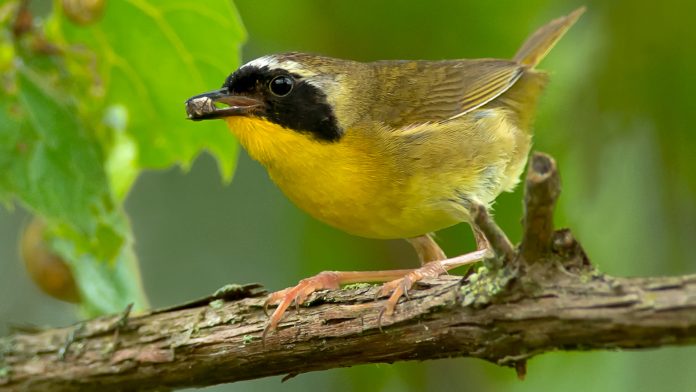A research team from the University of Wisconsin has discovered that large or showy physical features of males attract female yellowthroats, because they signal high-quality male genes, such as those linked with robust immunity or stress resistance.
How did scientists make this connection regarding high-quality genes?
Researchers at the University of Wisconsin (UW) conducted a comparative study with Skidmore College (SC), which revealed that different types of embellishments in male yellowthroats are linked to the same high-quality genes that enhance survival of offspring.
This relationship has previously been unclear, particularly in cases where females in different populations prefer different male embellishments.
The results reflect a large sample size, as Peter Dunn and Linda Whittingham at UW tracked female preferences for male ornaments in Wisconsin, while Corey Freeman-Gallant at SC studied preferences in upstate New York.
“We found that the particular ornaments that females tended to prefer in each of our locations did not match,” explained Dunn, distinguished professor of biological sciences. “Even though both characteristics are found among males in both areas.”
It was observed that females in the Wisconsin studies favoured a large black mask that extends across the eyes, while females in the New York population chose males with large yellow ‘bibs.’
Scientists investigated this behaviour by studying the genes of feathers on birds with larger-sized features, using techniques that have become feasible to employ only in the last five years.
It was discovered that, despite being produced by different pigments in different parts of the body, the size of the embellishment preferred by females in each population was linked to numerous high-quality genes that govern beneficial survival traits.
What issues arise regarding these results?
The research team have noted that the findings do not explain why the females have different preferences geographically, but they do have implications for evolution; the availability of more than one ornament as a mating signal allows females to potentially respond to a different choice if their environment changes.
However, Dunn noted that very few researchers have examined the female appeal of male ornaments in different populations. For example, studies of swallows have indicated that females prefer longer tails in some locations and browner bellies in other areas.
“Even fewer studies exist that explore the size of ornaments at the genetic level,” Dunn concluded. “With this study, we not only found genes related to ornaments, but we also showed that similar genes can be linked to different types of ornaments in different populations.
“It brings us much closer to understanding the function of ornaments. What we consider flashy characteristics may not be limited to mate choice. For example, they may be used in interactions between two males.”
The work was published 14 February in the Proceedings of the National Academy of Sciences.





